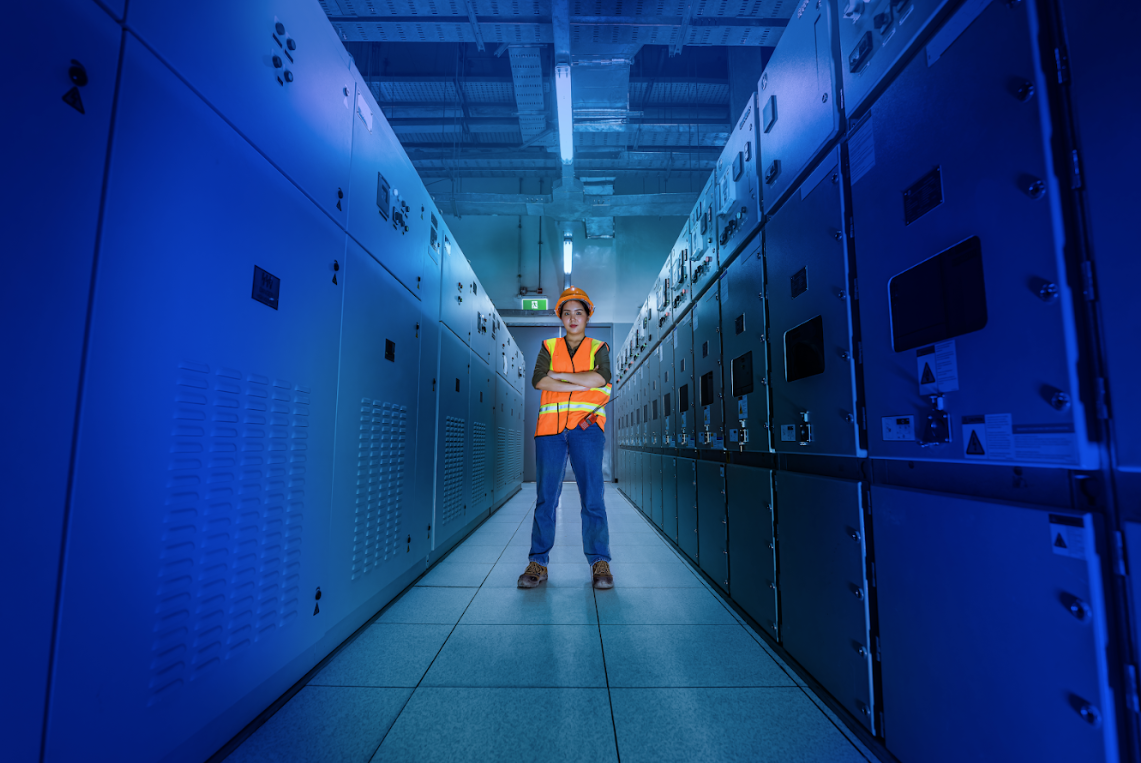Your destination for all things heavy civil – from job site interviews to industry insights.
.jpg)
If you’ve spent any time in construction lately, you can feel it: the ground is shifting. New policy incentives, reshoring initiatives, and a flood of AI-driven investment are rewriting the map of what, and how, we build.
AI isn’t just an abstract buzzword anymore. It’s a $10 trillion engine, driving nearly 40% of U.S. GDP, and it’s changing the physical world we all work in. Behind every model trained and every data point processed lies something tangible: data centers, transmission lines, substations, and water and power infrastructure that must be designed, permitted, sourced, and built… fast.
It’s easy to talk about AI in terms of silicon and code. But none of it works without the infrastructure to power it. The United States is now in an unprecedented race to construct the digital and physical backbone of artificial intelligence, from hyperscale data centers and cooling systems to high-voltage power distribution and renewable integration.
These facilities are not like the projects most of our industry grew up building. Data centers have unique demands for power, redundancy, and water access, as well as tight security and precise environmental controls. The construction footprint is intense: vast concrete and aggregate requirements, specialized steel assemblies, and ultra-tight schedules often tied to energy availability rather than land readiness.
Meanwhile, the utilities that feed these projects are being strained to their limits. Power delivery, grid reliability, and even water rights are now construction dependencies. The bottleneck isn’t in ambition, it’s in the speed and coordination of sourcing.
Construction is facing a paradox: we’ve never had more opportunity, yet our legacy systems make it more complicated than ever to move quickly enough.
Traditional sourcing networks, fragmented supplier relationships, and outdated procurement workflows weren’t built for projects that need to mobilize multi-state supply chains in weeks, not months. In sectors like data center construction, the contractors and developers are often national, operating across multiple regions with no entrenched local material networks. Every time a team has to manually locate new suppliers, certify Environmental Product Declarations (EPDs), or verify quality and transport options, the clock ticks, and opportunities slip away.
This inefficiency isn’t theoretical. The market is now so fast-moving that slow material sourcing can kill entire site opportunities before you break ground. It’s a systems problem as much as it’s a logistics one.
That’s where platforms like Bulk Exchange come in.
We’re not just digitizing procurement, we’re connecting the fragmented backbone of heavy civil and infrastructure construction to match the pace and precision the AI era demands. Bulk Exchange is built to centralize access to critical bulk materials. From aggregates to cement to recycled fill, and make compliance (including EPD verification) part of the sourcing fabric, not an afterthought.
For data center builders, power infrastructure contractors, and renewable developers, this means being able to instantly see verified, EPD-compliant material availability across regions, along with transparent logistics and supplier performance data. For suppliers, it means plugging directly into a national network of demand they previously couldn’t reach.
As the construction industry races to meet the infrastructure needs of AI, centralized sourcing isn’t just efficient, it’s essential. Without it, the decentralized nature of modern project delivery will continue to collide with the centralized urgency of national-scale opportunity.
Policy has set the tone: America is reinvesting in itself, from chip fabs to clean power to data infrastructure. However, this new industrial era won’t be built solely by policy. It will be built by the people and companies who can execute faster, smarter, and with greater transparency than ever before.
The infrastructure of intelligence requires intelligent infrastructure, and that includes how we move and manage the bulk materials that make it possible.
At Bulk Exchange, we see our role as an enabler of this evolution. By connecting the suppliers, logistics partners, and builders who will literally power our digital future, we’re helping the industry not just keep up, but lead.
.png)
.svg)

.svg)
.jpg)
.svg)